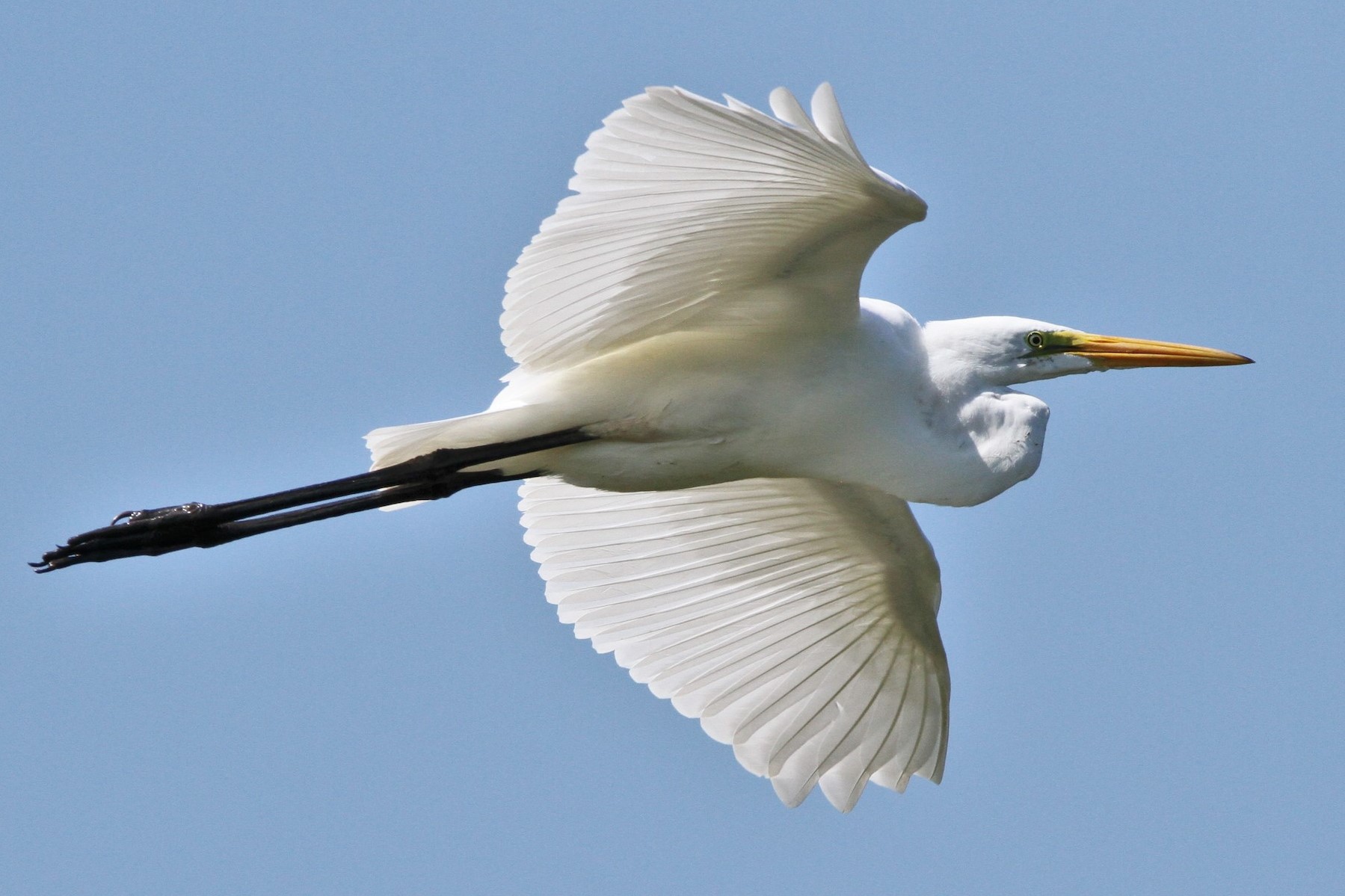The Graceful Giant: Exploring the Great White Egret in Uganda
The Great White Egret (Ardea alba) in Uganda. In the heart of Uganda’s vibrant wetlands and serene water bodies lies a majestic creature that epitomizes grace and beauty in avian form – the Great White Egret (Ardea alba); Standing tall with an elegant posture, adorned in pristine white plumage with striking yellow eyes and a slender neck, this bird captivates both casual observers and avid bird enthusiasts alike.
Physical Attributes and Behaviors
The Great White Egret is a sight to behold, with a wingspan that can exceed five feet, allowing it to glide effortlessly over water bodies in search of its prey; Its long, slender legs are perfectly adapted for wading through shallow waters, where it patiently stalks fish, frogs, insects, and small mammals with remarkable precision.
During the breeding season, these birds don striking breeding plumage, featuring delicate plumes known as “aigrettes” that cascade down their backs, adding a touch of regal flair to their appearance; Their courtship displays are a spectacle of synchronized movements, with males showcasing their prowess through elaborate dances and aerial displays to attract mates.
The Habitat of Great White Egrets in Uganda
Uganda, known as the “Pearl of Africa,” boasts a diverse array of ecosystems, from dense forests to expansive savannas. However, it is the wetlands that truly showcase the splendor of the Great White Egret. These wetlands, including the renowned Queen Elizabeth National Park and Murchison Falls National Park, provide a rich tapestry of habitats ranging from marshes and swamps to lakeshores and riverbanks, creating ideal conditions for these elegant birds to thrive.
Ecological Significance and Conservation Status
Beyond their aesthetic appeal, Great White Egrets play a crucial role in maintaining ecological balance within their habitats. As top predators in wetland ecosystems, they help regulate prey populations, contributing to the overall health of these fragile environments. Additionally, their presence indicates the vitality of wetlands, which serve as vital resources for countless other species and provide essential ecosystem services such as water purification and flood control.
Despite their importance, Great White Egrets face various threats, including habitat loss due to human activities such as agriculture, urbanization, and pollution. Furthermore, they are often targeted by poachers for their beautiful feathers, leading to declines in some populations. Conservation efforts, including protected areas, habitat restoration initiatives, and public awareness campaigns, are crucial for safeguarding these iconic birds and preserving the biodiversity they represent.
Cultural Significance and Human Interaction
In Ugandan culture, the Great White Egret holds symbolic significance, often representing purity, grace, and harmony with nature. Local communities living near wetlands have developed a deep understanding and respect for these birds, incorporating them into folklore, art, and traditional practices.
However, human activities can also pose challenges to the coexistence of humans and Great White Egrets. Encounters such as habitat encroachment, disturbance during nesting periods, and accidental entanglement in fishing gear highlight the need for responsible stewardship of shared environments.
Conservation Efforts and Future Prospects
Uganda has made commendable strides in wildlife conservation, with organizations like the Uganda Wildlife Authority and conservation NGOs working tirelessly to protect habitats and species across the country; Through collaborative efforts involving government agencies, local communities, and international partners, initiatives such as wetland restoration, sustainable tourism practices, and community-based conservation projects offer hope for the long-term survival of Great White Egrets and their ecosystems.
Remarks: – The Great White Egret (Ardea alba) in Uganda
In conclusion, the Great White Egret represents not only a marvel of natural beauty but also a sentinel of wetland health and biodiversity; Its story intertwines with Uganda’s rich ecological tapestry, reminding us of the interconnectedness of all living beings and the shared responsibility we hold in preserving the wonders of our natural world for generations to come.








